Izu Trail Journey 2024
Race Report 14: Living on the Trail
Izu Trail Journey 2024 (伊豆トレイルジャーニー2024) : 8 December 2024
The Izu Trail Journey is an event that takes place in Shizuoka Prefecture every December. The course is a 69.1 km trail run that starts in 松崎新港 (Matsuzaki New Port) at sea level, then goes over the mountains of Shizuoka (with 猫越岳 (Mt. Nekko (1,035 m)) as its highest point), and ends at 修善寺総合会館 (Shuzenji Sogo Kaikan : Shuzenji General Hall). The whole course has an estimated ascent of 3,242 m and descent of 3,162 m.
There are three aid stations on the course:
A1. こがね橋 (Koganebashi) (26.0 km)
A2. 仁科峠あまぎの森 (Nishina Pass) (40.2 km)
A3. 土肥駐車場 (Toi Parking) (51.2 km)

I have run trail races before and I have run ultramarathons before. But this was my first time to run a trail ultramarathon. Considering I ran the Challenge Fuji 5 Lakes Ultramarathon (118 km) in April 2024, I thought a 70 km run wouldn’t be too hard. I was however quite mistaken and I now have a much better conceptualization of trail races.
On with the report!
Expo (Check in)
The day before the race there was an expo in 三島 (Mishima). Runners had to report to the expo to get their gear checked and make sure they were fully equipped to take on this race. In a lot of other races I’ve entered, the rules just stated you needed to bring a cup or a water bottle for use at the aid stations. This race had a whole list of items you needed to including a first aid kit, portable toilets, and two lights with spare batteries for both of them (among other things).
I turned up at the expo, got my gear checked, sorted out the bus times (I had a bit of an issue with booking the bus), then went and checked in at my hotel.
I find it difficult to sleep before big races but I know rest is important so I just laid my gear out ready to go the next day and attempted to get some shuteye at 8 pm. I woke up just before 2am the following day to go get the bus.
Race day
I boarded the bus at 2:30 and arrived at Matsuzaki New Port at 4:30. The race started at 6:00 so there was quite a bit of waiting around in the cold. The temperature was 9 degrees so it wasn’t that cold, but there was a strong sea breeze that cut right through you. In fact, the wind was so strong that the organizers were unable to put up a start gate this time…which was a shame because those really add to the race atmosphere.
There was a mad dash at the start of the event with some of the faster runners charging right up the first set of hills. Everyone was wearing headlights at the start so as they set off you could just see a line of runners wrapping themselves around the mountain like Christmas lights.
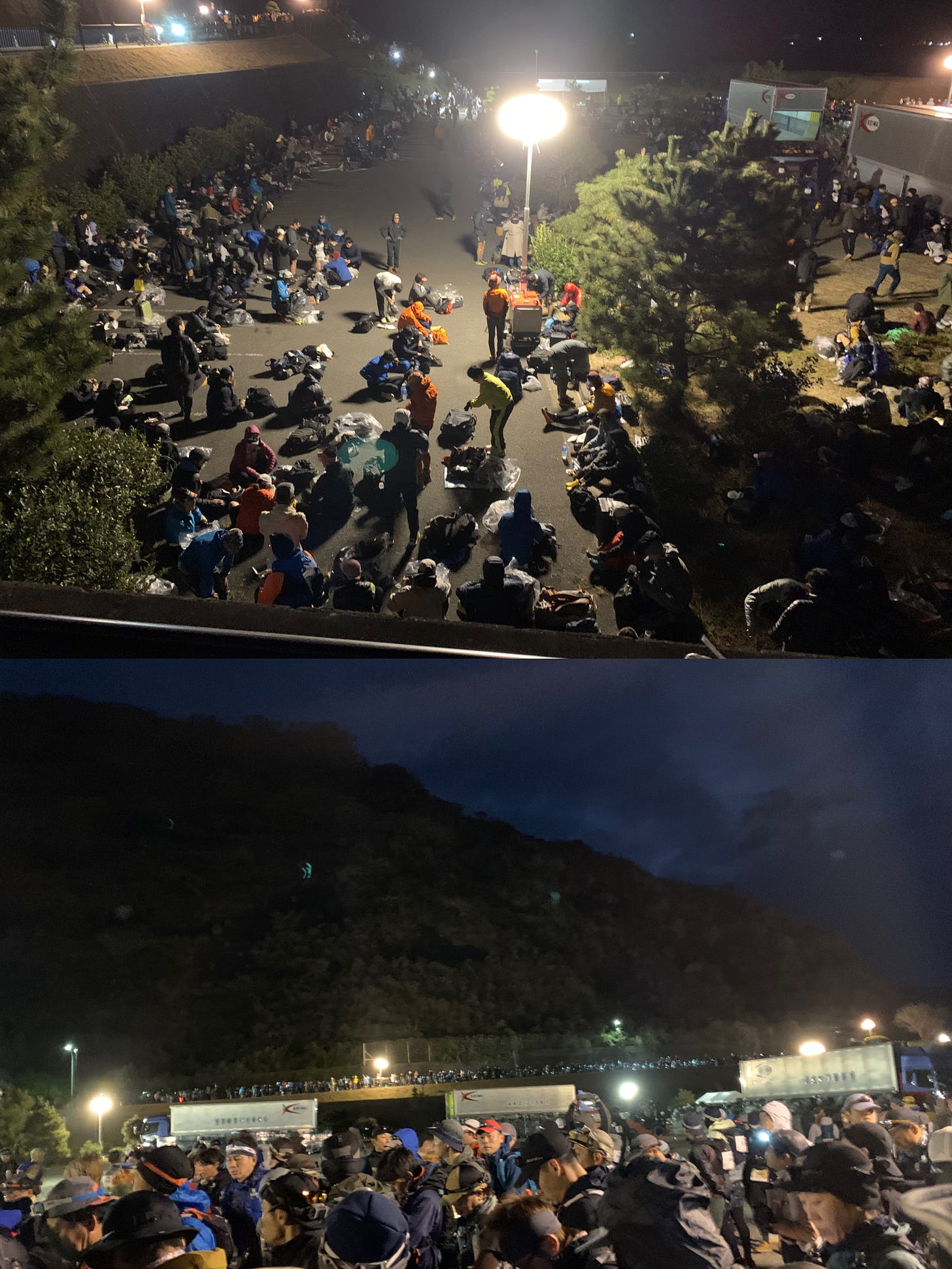
It was quite useful to see the lights as we were going up the hill at the start but as it got lighter people started switching off the lights and the contrast in visibility quickly disappeared.
The first section of the course was a long ascent up a set of winding roads that led up to the first trail. Everyone had a lot of energy at the start and a lot of people (probably including myself) pushed hard in the first section. It was still cold but people were overheating quickly and taking off their outer layer. I was tempted to do so myself (I was wearing 3 layers) but I was shortly glad that I didn’t.
We kept on climbing higher and higher with some beautiful scenery (and the occasional obstacle but overall the course was still very runnable.
At the 9.7 km mark we ran through the grounds of the 宝蔵院 (Hōzōin) temple and around the back to an area with a lot of climbing.
It was pretty much solid climbing for 3.6 km until the 八瀬峠 (Yase Pass) checkpoint. There was no choice but to slow down in these areas because everyone was essentially in a traffic jam up the mountain.
As soon as we got to the pass a big downhill section started for roughly 4 km. This section was pretty much a downhill road, which is something I’m quite good at. I find that if I just keep my legs high and try to relax I just fly down the hill. I checked my watch as I was running and saw that I was hitting speeds of about 4:30/km, and although I was getting a bit hungry at this point, I decided that slowing down in these sections would be terrible to waste. Walking an easy downhill section takes just as much energy as walking up a bit of an incline so it’s a good idea to choose when to use strategic “power hiking.”
During the next uphill section up to 諸坪峠 (Shotsubo pass) I decided that 15 km into a run was probably a good time to eat something. I still had more than 10 km to the first aid station. I brought some sports yokan* with me but when I tried to squeeze it out I found that the thing had more or less frozen solid. It wasn’t ice cold outside but clearly it was cold enough (especially with the wind) to impact my gear in a way I hadn’t anticipated. With some effort I managed to bite the packet and pull out the snack with my teeth. I repeated the process with a second packet giving me an extra 250 calories, then I alternated power hiking and running until I got to the next big downhill part.
*Note: Yokan is a kind of bean paste. It’s thicker than a gel and comes in a tube that can be squeezed out.
After Shotsubo pass I charged downhill until around the 26 km point and saw a bunch of people lining up near some toilet stalls and realized I’d arrived at the first aid station at こがね橋 (Koganebashi) (26.0 km). The incredibly welcoming aid station was across a small bridge and covered in Christmas decorations. I ate a banana, slammed multiple cans of coke, refilled my water bottles, and was talking to one of the volunteers for a while while eating a handful of potato chips.
The conversation I had with the volunteer was very useful. She had run the same race several times and was just supporting today. I mentioned that I’d clipped my head on some low trees earlier in the course and she mentioned that I should be careful because there are a lot of low branches later on in the course.** I talked to her about how beautiful the scenery is and she also said to me that I should keep going because it gets “100 times” more beautiful later on. I thanked her for the support and started up the next RIDICULOUS hill to checkpoint 4 at 二本杉峠 (Nihonsugi Pass).
** Note: In the business, we call this foreshadowing.
And when I say ridiculous, I mean ridiculous. It started off as a slope that gradually got steeper. It eventually got so narrow and so steep (especially just before the 28 km point) that I couldn’t even take a picture to give you an impression of how narrow and steep it was. This was just climbing. Not running.
This bulls, situation continued until the Nihonsugi Pass checkpoint and then I entered what could be called a “runnable trail” section of the course.
It started off as a narrow, pleasant trail with a steep drop a comfortable distance to the side of the trail, but eventually the scenery changed to ‘drop, very narrow trail, wall.’ Some of the trail barely looked like trail and couldn’t be stood on. It required momentum to not fall down the cliff.
I didn’t take any pictures for a while due to the real possibility of falling off the cliff and literally, “dropping out of the race.” So I kept 100% of my concentration on carefully traversing this trail until I could get through to the next big climb.
“I heard a rumor this course had a lot of runnable trail,” became a bit of a joke between me and another runner for a while as we dragged ourselves up another ridiculous climb but then the terrain started to change a bit. The hills (and cliffs) disappeared and we started actually being able to run again through a forest of small (but very sturdy) trees. Although it was nice to be able to run again I discovered that my height was a bit of a disadvantage and needed to crouch as I ran. This awkward running posture is not something I had trained for before and it quickly became uncomfortable.
About 5km of dodging low branches later I eventually found myself at the highest point of the course, Mt Nekko (1,034 m). I was focusing more on the mountain name than anything else (it literally means “cat crossing peak”) so when I took a picture of the sign I didn’t notice that the next checkpoint (and aid station) at 仁科峠 (Nishina Pass) was approaching.
The route to Nishina pass was mostly downhill but it was quite frightening terrain. There were a lot of looping roots that it was easy to get your foot caught on. At one point I tripped over one of these roots, which took me slightly off the trail and into the path of a fallen tree with it’s spiky root system facing me. I had no way to turn because my momentum was totally going in that direction so I elected to just jump over the thing and grab the next tree to stop myself. I managed to escape injury using this strategy and the runner behind me who saw the incident looked both concerned and impressed in equal measure.
When I exited the forest I found that the terrain had completely changed again. I was able to start running upright again and the trail underfoot was grassy. The trail itself cut through a grove of bamboo grass (笹 : sasa…I think). The variety of terrain in this course was amazing. I was also really glad to be running with this grass protecting me from the wind because there was quite a cold cross breeze coming from the ocean.
We kept running downhill and eventually needed to leave the fields, navigate some roads and a bit more rugged trail, then eventually came to the second aid station at Nishina Pass at 40.2 km.
I spent a good 10-15 mins at this aid station enjoying what they had to offer. The udon was fantastic (and exactly what I needed to warm up). I burned my mouth a little on the second serving of soup but I didn’t care much. It turned out one of my neighbors was volunteering at this aid station so I had a great chat with him and also ended up having a chat in English with a volunteer who was giving out recovery gels (those gels were amazing by the way. I took one with me to use later). The conversation was quite funny to me at the time due to the questions, “Is this the first time you’ve tried udon?” and “Are you enjoying running in Japan?”. The answers to which were that I have been in Japan for 18 years and never made any effort to avoid udon until now, and that although I am running, ‘enjoying’ is a strong word because I still have 30km to go.
I left the aid station in high spirits and went charging up the next hill. A few hundred meters later I decided it wasn’t a good idea to charge up the hill and settled into a more steady pace. I got to the top of the next hill and noticed a theme forming in the race. You would climb to the top of a hill, look into the distance, see a line of people running up the next hill (and possibly even the hill after that), and once you got as far as you could see, you’d be met with the view of another few hills stretching out into the distance that you needed to climb.

Not that I’m complaining at all. The scenery was beautiful. I’d call it breathtaking but I’m not sure how much of that was the scenery itself and how much of it was the continuous climbing.
There were climbs, descents, more climbs, and more descents. We also went through another forested area where I was needing to very much focus on my foot placement. The forest area was really beautiful to run through but I was also approaching the 50 km mark and I may have been getting a bit tired. I left the forest, and started running up a bit of road. My pace increased because I was on a smooth road but I was still looking at the ground in front of me after running through so much technical forest terrain. It was at that point that I ran right into a low hanging branch. I took the full impact on the top of my head and it knocked my hat flying. I was knocked completely senseless at the point and could barely even see. Another runner stopped to ask if I was ok and I told him I had lost my hat (it was directly at my feet). My fellow runner made sure I was ok and we ended up jogging up the hill together for a while while I collected myself again. I had a shallow scratch over my head and thought to myself that I was lucky I was wearing my hat. (The volunteer at aid station number 1 was right about the trees).
There was a lot of ascending going towards the next aid station. I as checking the elevation plot on my watch as I was running along and I knew I was heading towards the final big ascent of the course. I crossed a road at one point and was met with a huge flight of stairs leading into another forest. I groaned at the sight of the stairs and was (jokingly) rebuked by one of the volunteers for groaning. I responded by turning around, shouting, “YAY! 階段大好き!” (Yay! I love stairs!) and tried my best to approach the next ascent with gusto.
After the stairs that I was clearly lying about loving, I went through another short forest section and to a road section where “the cone of hope” sat in the road. The cone had a sign stuck to it saying “Another 1 km to the (last) aid station.” I was power hiking at this point but the speed of my power hiking definitely increased.
The aid station at 土肥駐車場 (Toi parking) was at 51.2 km and very much in official ultramarathon territory. I was looking forward to this aid station even before I started the race, mostly because I heard of the boar stew they would be serving here. In the race rules it states that you needed to bring your own bowls and utensils to eat this so I had been training with this bowl in my backpack and was ready to use it. (It was excellent by the way). I filled one of my water bottles with a sports drink, the other with water, slammed a coke, slammed a red bull, and got ready to start the final (largely downhill) leg of the journey. 18 km to go.
There were a lot more climbs than I expected in this “largely downhill” section but they were absolutely stunning. This was yet another section where you could see the path stretching off into the distance knowing you had more climbs in your future.
The climbs were difficult but by this part of the race anything but a smooth downhill section was getting hard. I’d kicked so many rocks/roots and my toes had hit the front of my shoes so many times that my feet were starting to hurt and I was needing to choose my footing carefully. Checkpoint 5 at 戸田峠 (Heda Pass) went by without much notice since I was focusing so much on my footing, but I took a short restroom break at Checkpoint 6, だるま山高原R.H (Darumayama Kogen Rest House).
The climb down from checkpoint 6 was a bit steep but it quickly opened up to grassy downhill slopes. The descents were still quite painful but I was still able to pick up a bit of speed in some areas. During one of the climbs in this part I ate/drank that gel I picked up at the second aid station, which really gave me the boost that I needed to keep going.
At one point during this descent I came across two people dressed as big flowers at a fork in the road. The flowers directed me to the right path so I headed that way, which turned out to be correct. I didn’t take a picture of these volunteers but I know for a fact I saw them.
After a little more descending I came to a small flight of stairs, and a couple of volunteers that told all of the runners to get their lights out before they could carry on. It wasn’t quite dark yet but it was a good idea to get the lights out before it got too dark to see anything. I took my light out of my backpack and secured it but I had a lot of trouble attaching my running pack again. My hands just weren’t cooperating and it took a minute or two to put it back on properly. It wasn’t even that cold so I’m not quite sure what happened there. From here there was about 8 km to go.
The next part of the trail led into a more rocky road like area. It was starting to look less like intense technical trail and more like uneven road surfaces for a while. There was a bit of climbing involved here and there but I ended up simply hiking that part. I snapped one final picture of Mt Fuji before the sun went down and then I was locked in until the end.
Right after I took this picture I switched my light on and headed into a dark forest section. The trail was pretty technical and it wasn’t long before I was in total darkness apart from the cone of light produced by my headlamp. My watch was able to give an estimated time of arrival based on my pace and the distance I had left. I had 5 km to go and it predicted it would take me about 50 minutes to do it. I was not happy with this prediction so I did my best to speed up. A fire had been lit under me and suddenly I was descending through technical trail much faster than I had done earlier in the course, totally ignoring the pain in my feet.
I emerged from the forest to a stretch of flat road. This must have been at the final checkpoint, 日陰山出口 (Hikageyama deguchi). It’s only writing this report that I realize the name of the checkpoint literally translates as “Exit of shade mountain”…which is kind of an amazing description. I’m much better at road running than I am trail running because I’ve had more practice, and my legs were (somehow) still fresh after coming off the trail. There was about 3 km to go until the finish line at Shuzenji General Hall and I was ready to make up some time.
I saw some runners walking/staggering towards the hall after the long trail and I passed them all. No one was even trying to pass me at this point. I was just reeling in runner after runner and the ETA on my watch started to recalibrate to my new speed.
Shuzenji was absolutely beautiful. I didn’t have much time to admire the illuminated river and the traditional buildings, but it’s a place that I would love to visit again should I have time in the future.
As I was approaching the end I could see more lights and Izu Trail Journey banners, and heard a lot of commotion up ahead. A volunteer directed me down a slope towards a bridge with a “もう少しです!お帰りなさい!” (Mou sukoshi desu. Okaerinasai! : Just a little further. Welcome back!). I charged across the bridge, saw the finishing tape and charged through the thing with my arms held high.
The race director, Kaburaki San, called me over after to do a post race interview. Something in my brain must have tripped because I was in martial arts mode saying, 押忍 (Osu) in response to some of the questions as an acknowledgement. I haven’t seen the interview but I think I probably sound a little delirious after that run.
One of my friends was volunteering at the finish line and took my race chip. I was so happy to see someone I knew at the and after going through such an ordeal. I ended up collapsing to the floor for a couple of minutes after to compose myself before I could shake myself back into being a functional human being again.
I noticed a line to take pictures with the finisher board so of course I lined up and got my victory picture taken. Finishing with a smile as always.
After the race
After the race I got my gear, and headed back to my hotel. My hotel was in Mishima so it took a bus, a train ride, and a 20 minute walk to get back to my hotel. I ate some convenience store food, took a quick bath and crashed out as soon as I was able to.
The following day I was sore (especially my lower back) but I was still able to function. I walked 30 minutes in the morning to get to a hot spring in Mishima (which I very much appreciated). I still managed to get 10,000 steps in the day after the race so I was in much better condition than I expected to be in.
Results
Overall, 1,529 people entered the race. The overall completion rate was 86.5% (1,343/1,529). This is across all distances and divisions.
The completion rate of the mens division was 88.5% (1,120/1,265).
I finished in 11:25:37 and was in 538th place (538/1,265), which put me in the top 50%.
Unfortunately there was no completion medal for this race so I have nothing to hang on my wall.
According to my Garmin I burned 6,436 calories during the race and did 92,433 steps.
Final thoughts
I think I like trail running. But it’s a totally different sport to running on the road.
When you run on roads you are pretty much using the same muscles over and over again with every step until you reach the end. With a trail like this you are constantly changing the muscles that you use and as a result the way you get tired is a little different.
When I finished the Challenge Fuji 5 Lakes Ultramarathon I could not walk the following day. This time I was able to walk around without too many problems and spent the next few days doing active recovery walks. I was back to the dōjō on Wednesday and running again by Thursday.
My ability to move around so freely after could be due to getting stronger through running (my second marathon was WAY easier to recover from than my first one) or it could be something to do with the muscles used being different.
More experimentation is required. And I definitely want to enter more events like this in the future.
Thank you!
If you made it this far, thank you very much for reading. I know this was a long read. But I know that if I ever enter the Izu Trail Journey again the information in this report would be very valuable. I also hope that it’s useful for other future ITJ runners.
If you enjoyed my writing please consider subscribing for more content like this.
Cover photo:



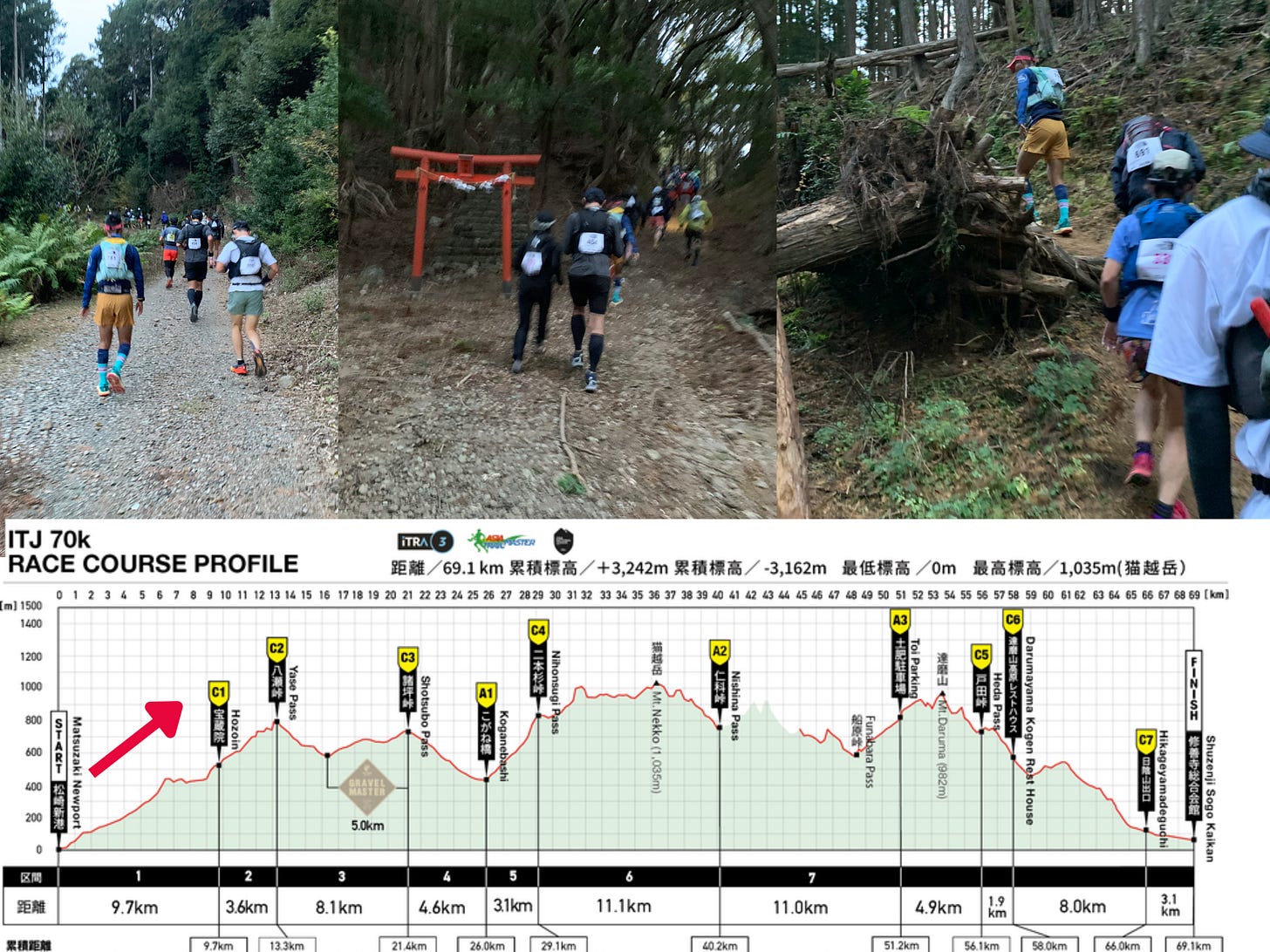
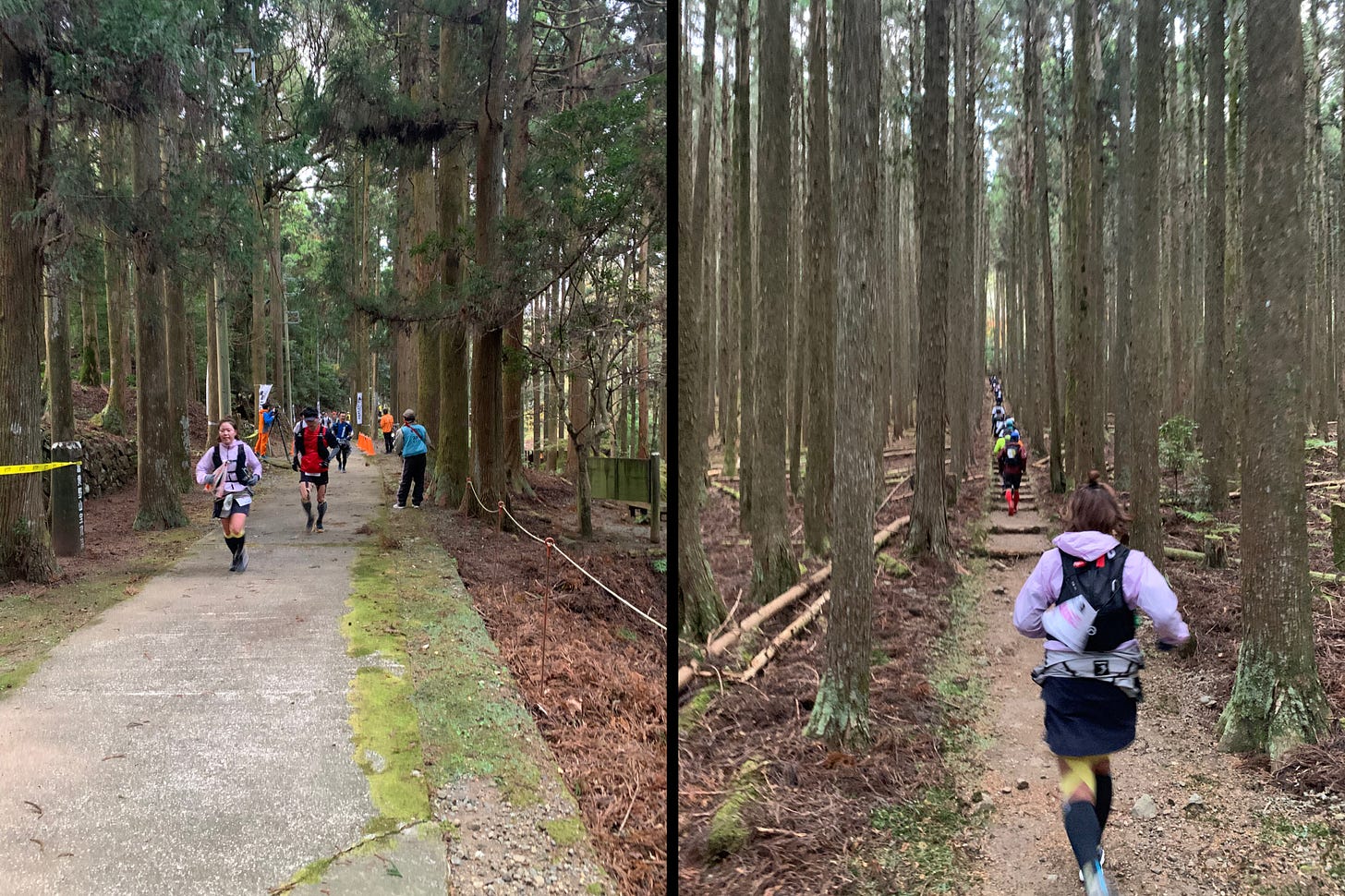

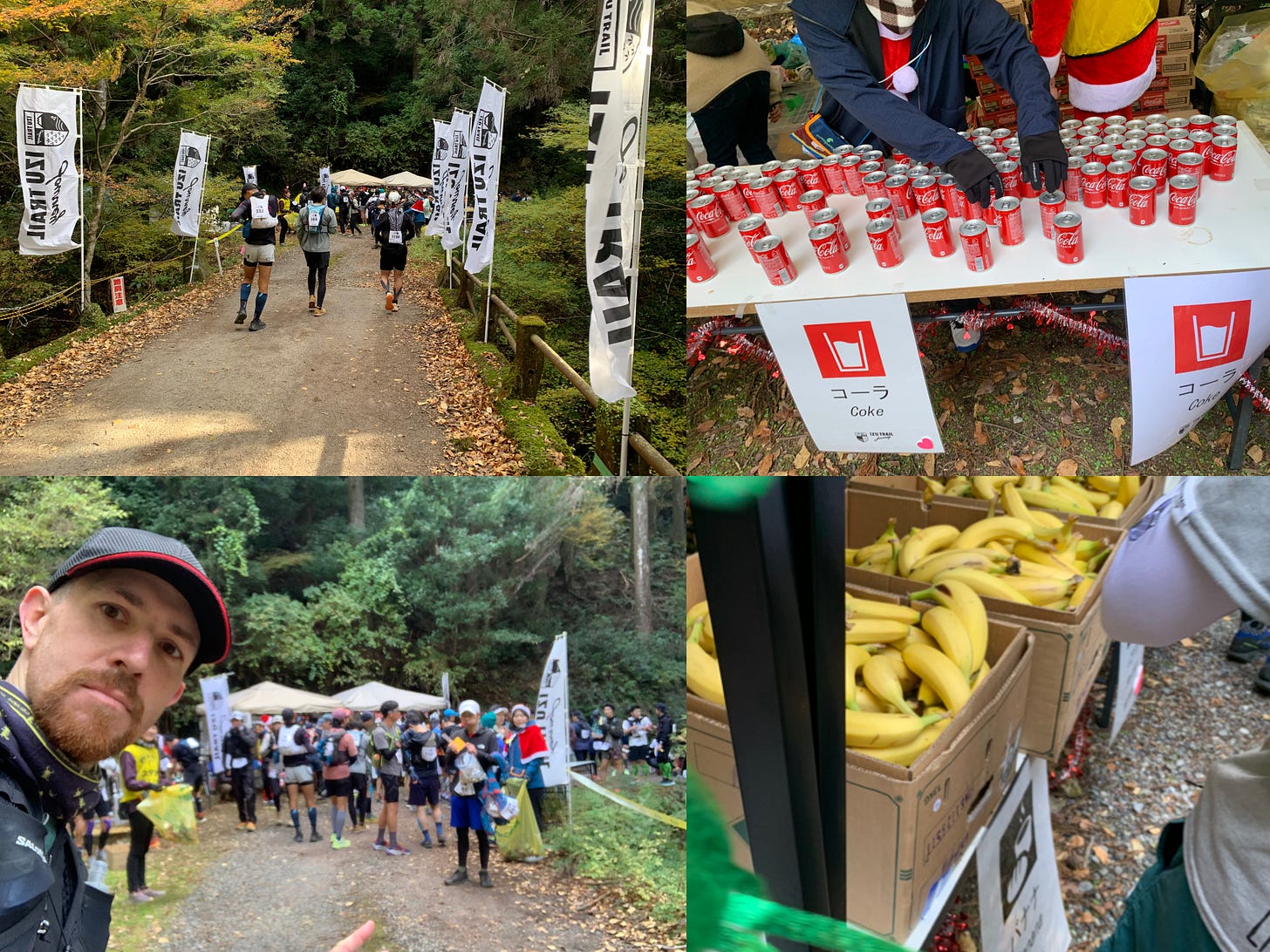
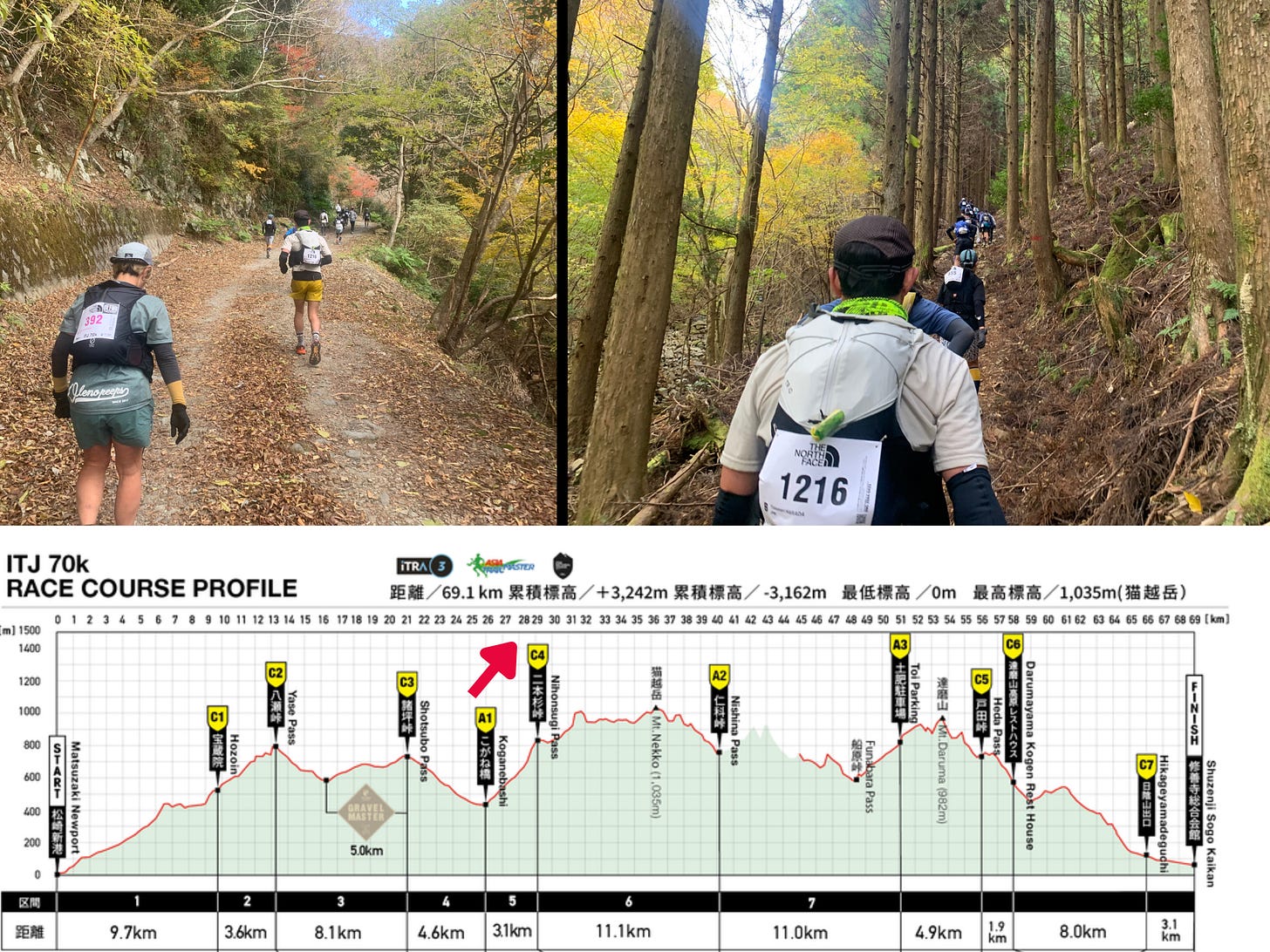

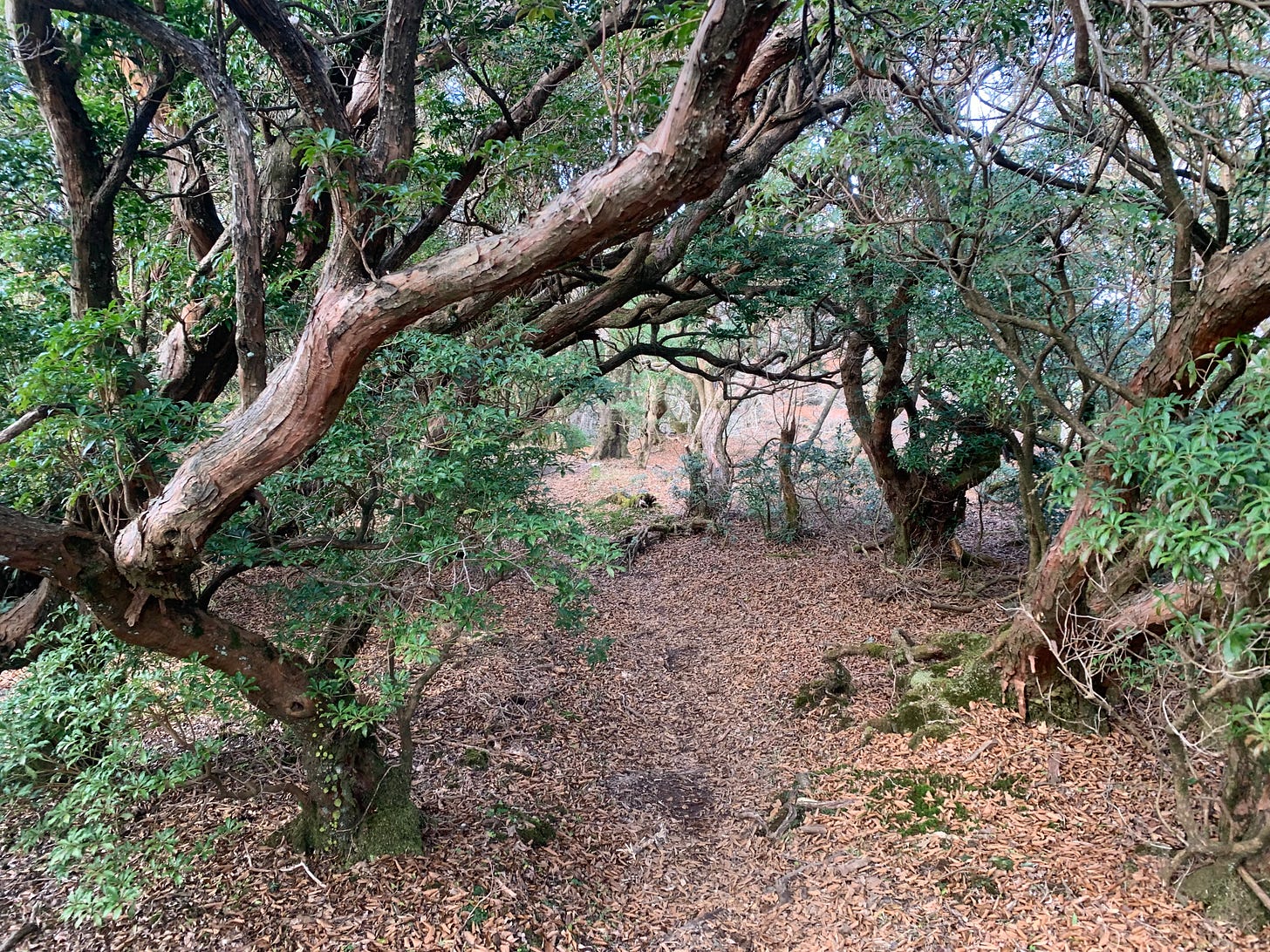
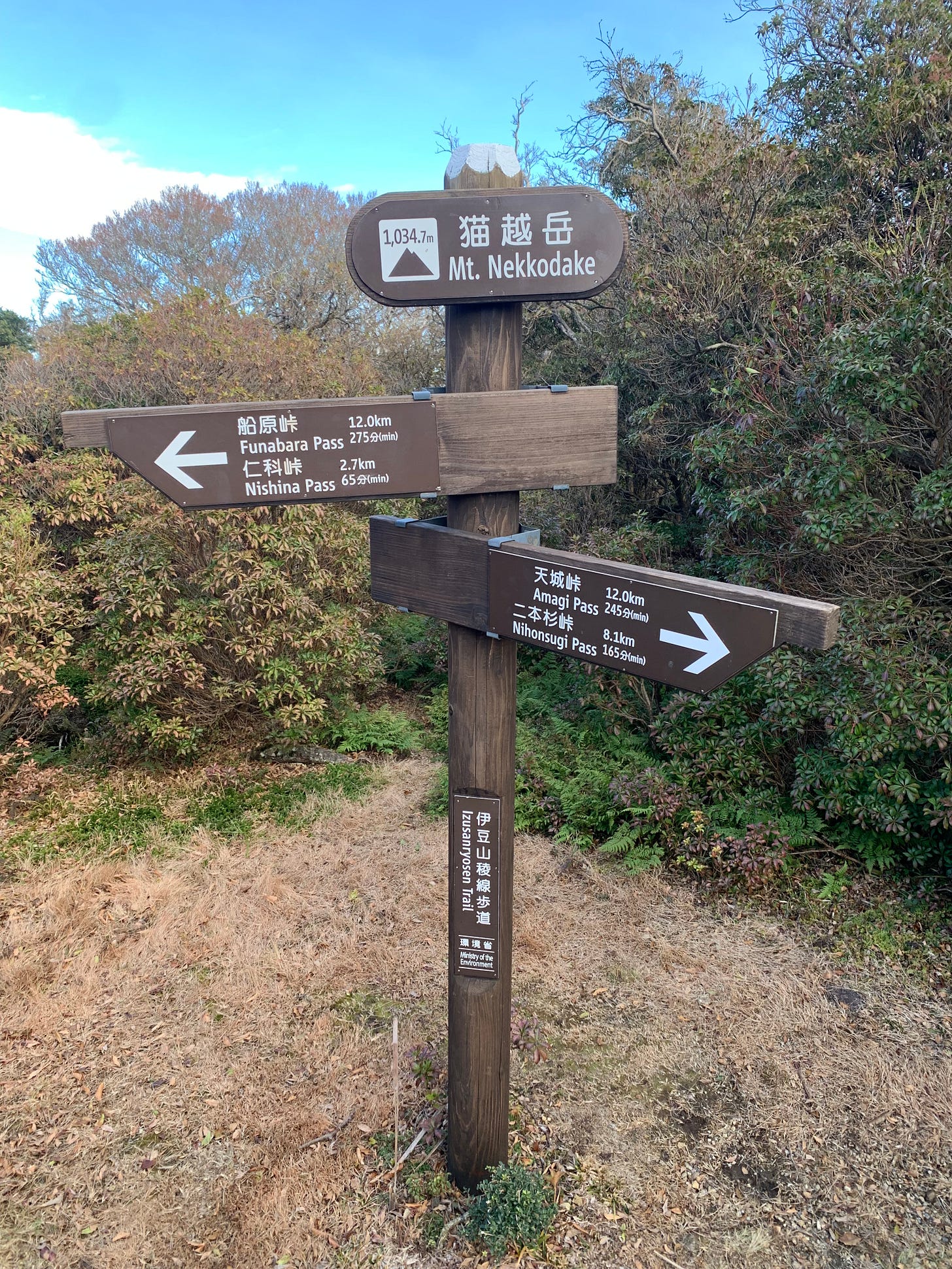



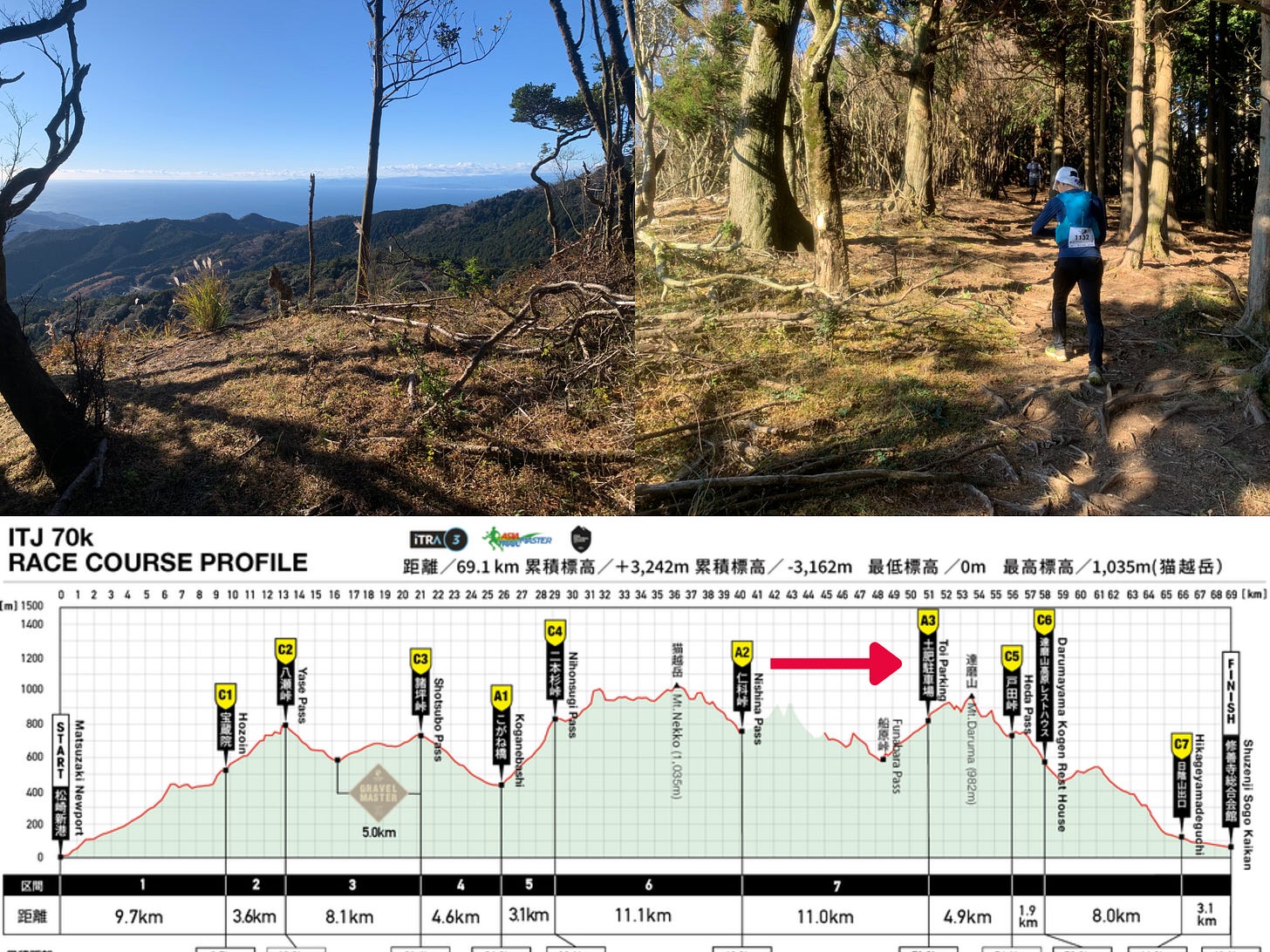
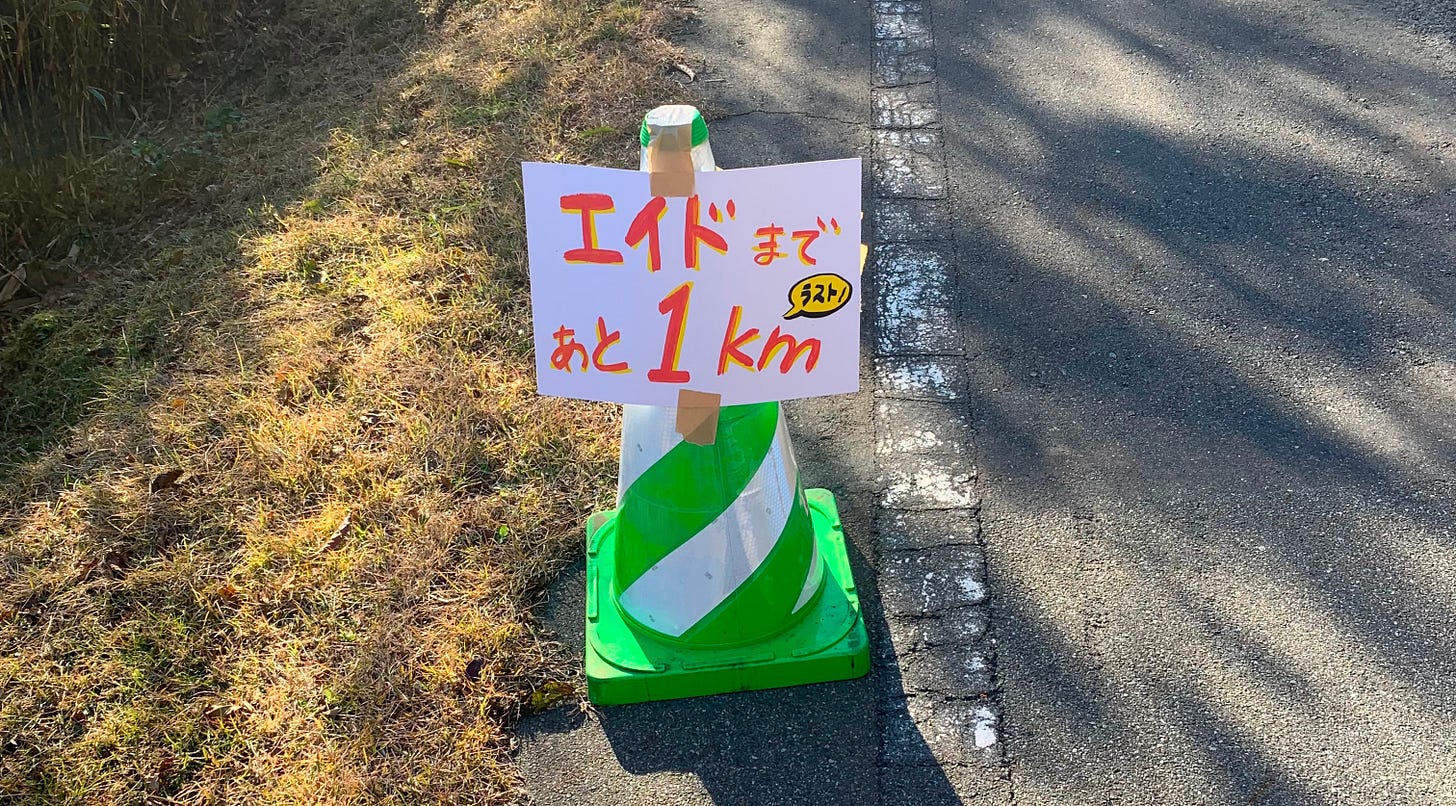
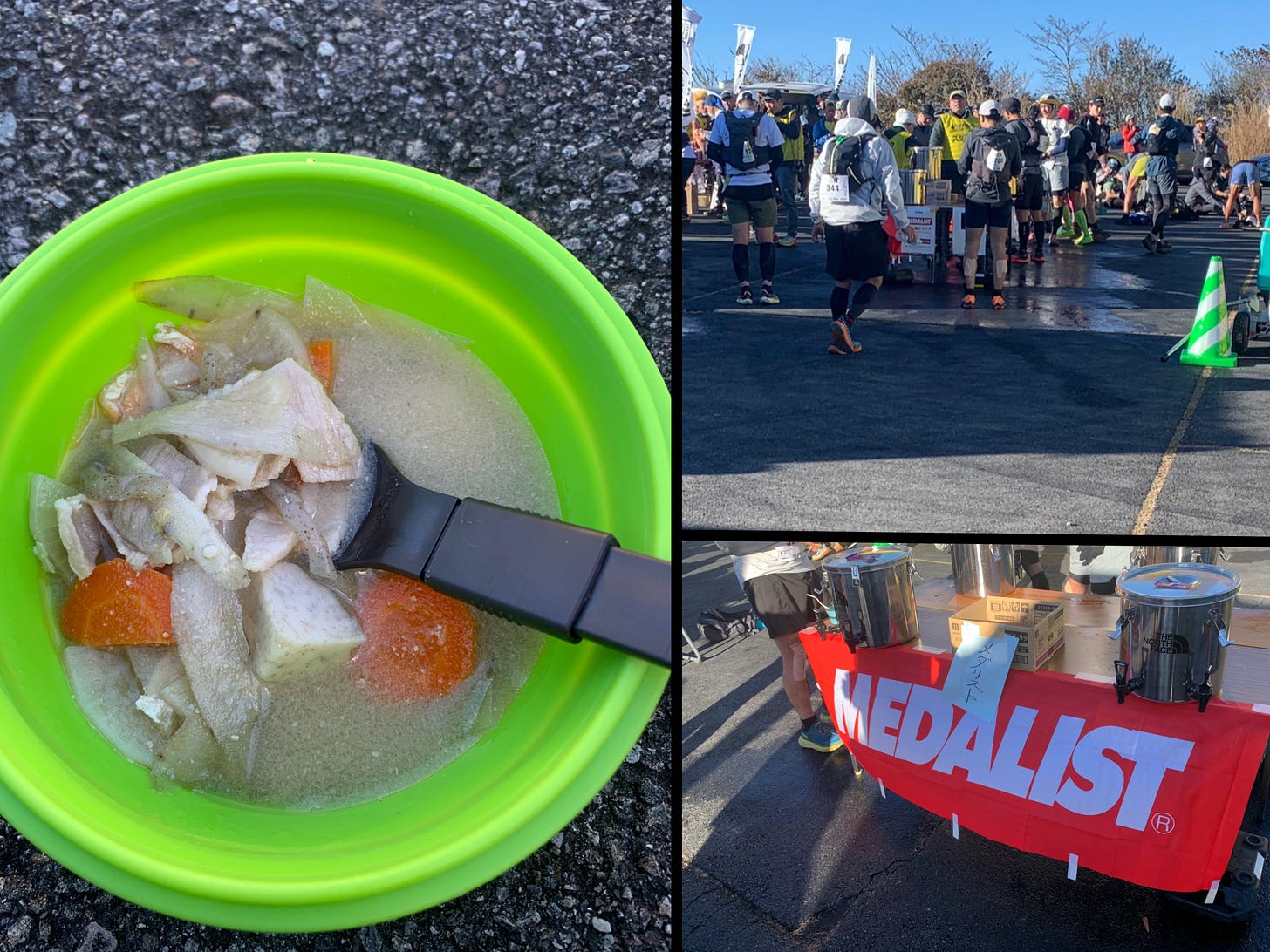


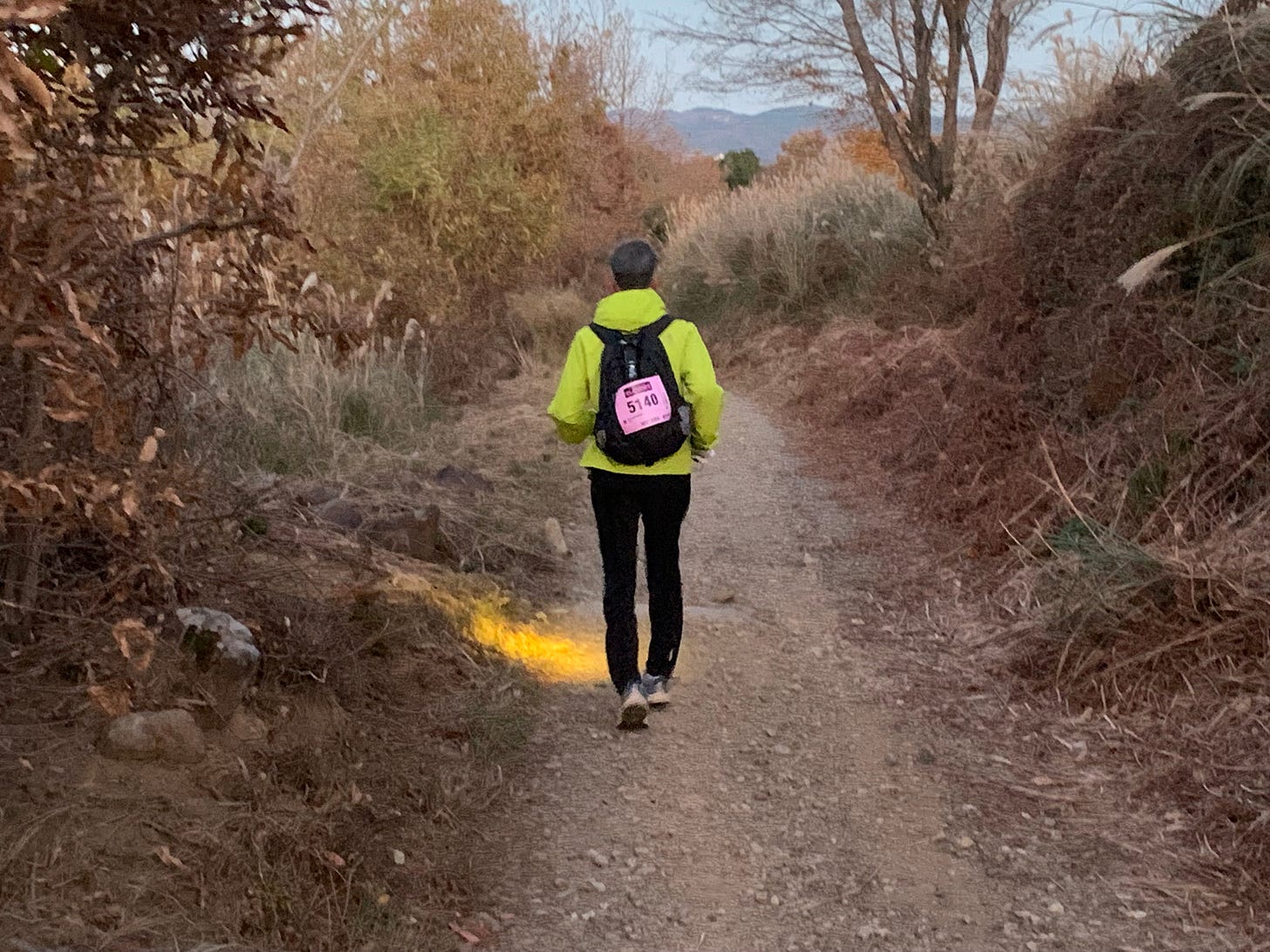

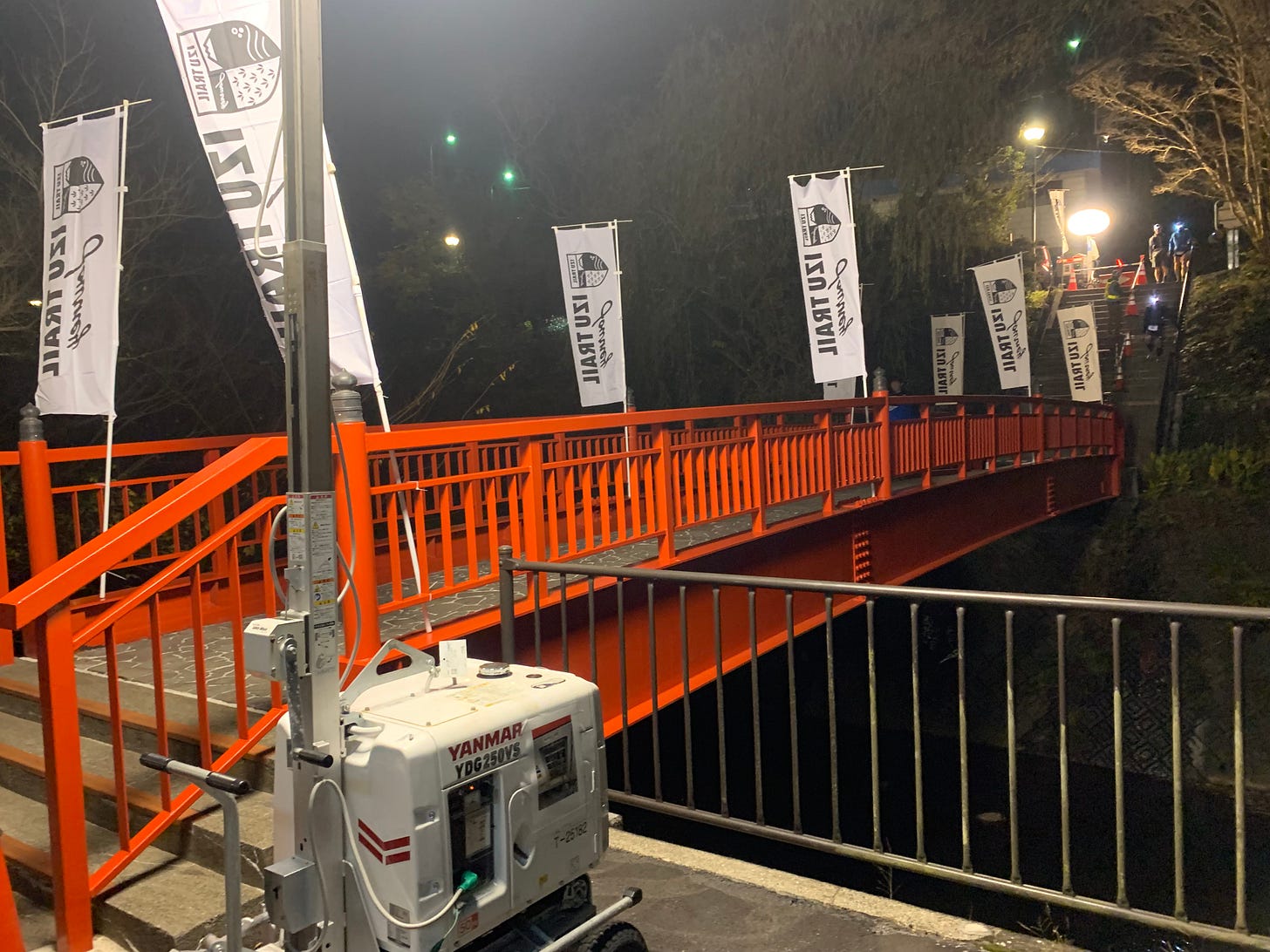


I was contemplating if I would be able to attend the 2026 edition. I want this for my Asia Trail Grandmaster quest (5 local races and 1 international race). love how you went thru the details of the segments and it made me more excited to really prepare for this.. I'm just not sure if I'll be financially able to do it. happy to have bumped into your blog!